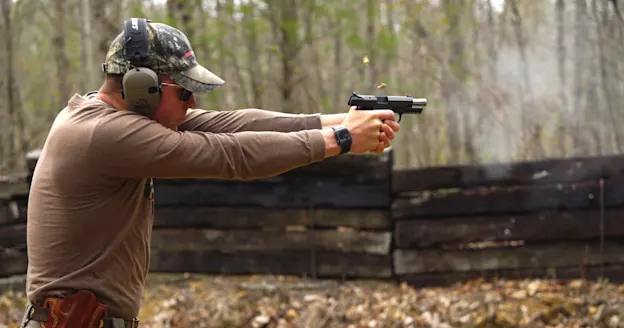_We may earn revenue from the products available on this page and participate in affiliate programs. Learn more ›
_
Best Indoor Radiant
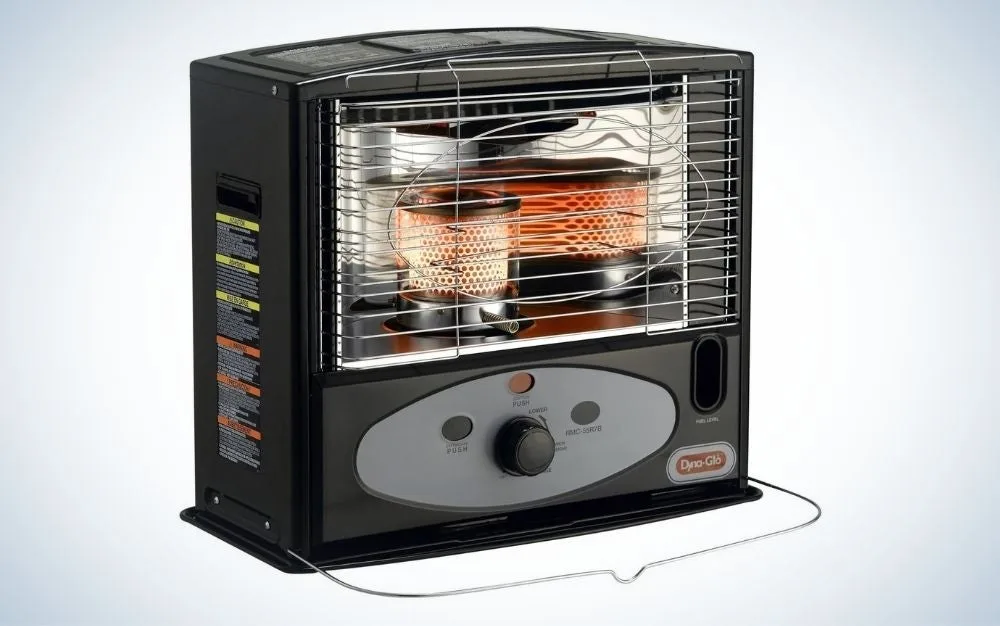
Dyna-Glo Indoor Kerosene Radiant Heater
LEARN MORE
Summary
Attractive, small, and heats for 13 hours
Best Indoor Convection
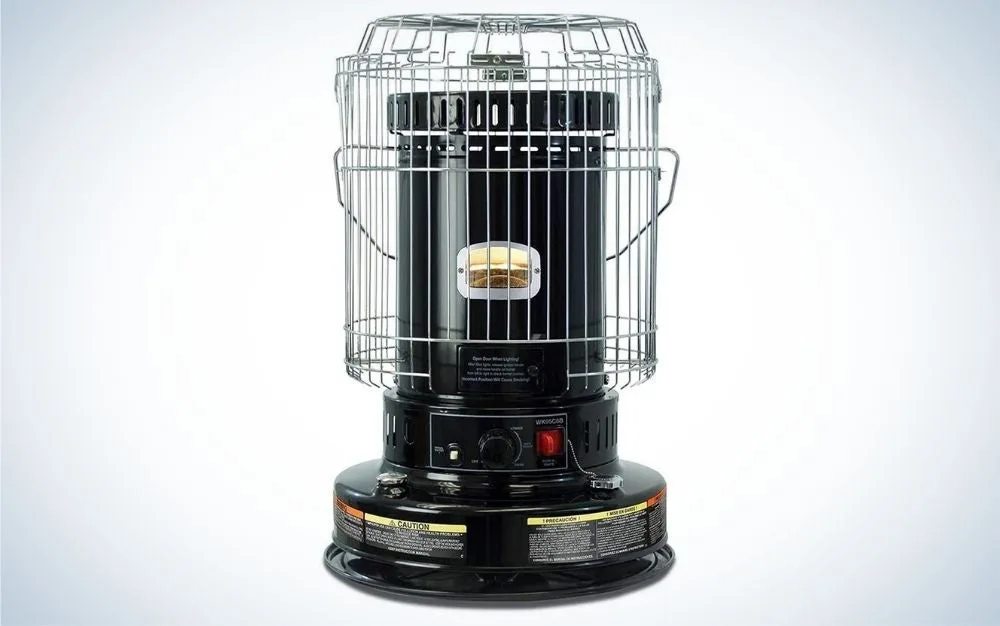
UTY Convection Kerosene Heater
LEARN MORE
Summary
It emits 360 degrees of warmth
Best Portable
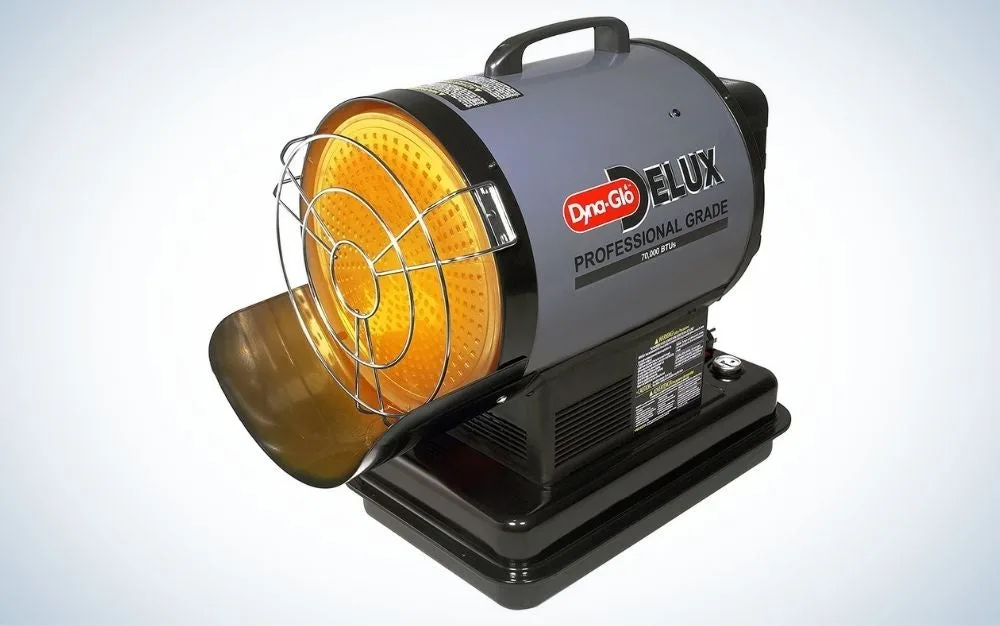
Dyna-Glo Portable Kerosene Heater
LEARN MORE
Summary
Powerful and ideal for job sites
Kerosene heaters led to the cliche “burning the midnight oil.” Before electric lights became common, oil lamps were really the only option for illumination after dark—but these weren’t terribly efficient since they produced only weak limited light. That all changed circa 1846 when Canadian geologist Abraham Gesner
began experimenting with coal. He figured out that solid coal could be distilled into a liquid lamp fuel that burns much more brightly than regular oil. And so kerosene was born. Gesner patented the distillation process and sold it. Kerosene would eventually become the fuel used most widely to light North American homes in the 1860s—and enjoyed that status until electricity generation. The kerosene heater, though, never went away.
In many places, indoor kerosene heaters remain popular for routine heating in homes. People who usually rely on electricity or natural gas for indoor heat benefit from portable heaters
as supplementary or backup heating. Kerosene heaters will warm a home during a power outage or blackout. They’ll also heat a zone that doesn’t get much heat from a central heating unit, heat spaces like garages or workshops that aren’t connected to the main heating grid, and provide heat during an outdoor activity (think camping or fieldwork) where a small heater can take the chill off.
The best kerosene heaters now do the same thing kerosene did way back when: They provide reliable and efficient fuel to make people’s lives more comfortable.
Best Indoor Radiant: Dyna-Glo Indoor Kerosene Radiant Heater
Best Indoor Convection: UTY Convection Kerosene Heater
Best Portable: Dyna-Glo Portable Kerosene Heater
Most Versatile: Craftsman Forced Air Kerosene Heater
Best Converter: Bulletshaker Mini Heater Warming Stove Cover
Best Kerosene Heaters: Reviews and Recommendations
Best Indoor Radiant: Dyna-Glo Indoor Kerosene Radiant Heater
Best Indoor Radiant

Dyna-Glo’s indoor kerosene heater is ideal for zone heating as it provides 500 square feet of radiant heat. Safety features include a cool-top design, push-button ignition, one-touch shutoff, and automatic shutoff if the heater tips. Its clean lines allow it to fit in with the typical home decor.
Best Indoor Convection: UTY Convection Kerosene Heater
Best Indoor Convection

This kerosene heater emits 360 degrees of warmth and covers up to 1,000 square feet. The heater has a protective grill that surrounds the heating element to prevent accidental contact. The push-to-ignite feature makes it simple and safe to turn the heater on indoors or outdoors.
Best Portable: Dyna-Glo Portable Kerosene Heater
Best Portable

For users who want a more versatile option, a portable kerosene heater in an easy-to-lift design. That way you can take it in the field, or back and forth from the worksite to home. A forced air heater enables you to heat a large area quickly.
A portable kerosene heater packs a punch with enough BTUs to cover 1,750 square feet—whether indoor, outdoor, at work, or at home. The rugged handle is built-in, and the unit requires no assembly. It’s a forced-air unit, so it will heat up large empty areas quickly.
Most Versatile: Craftsman Forced Air Kerosene Heater
Most Versatile
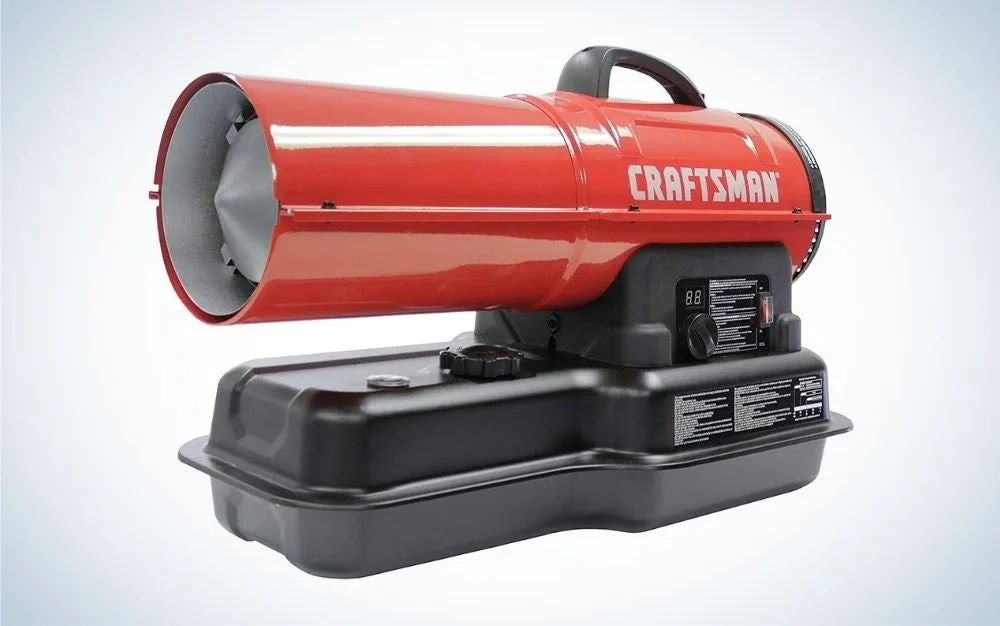
This Craftsman forced air kerosene heater allows the user to fuel the unit with either kerosene or diesel fuel—and you don’t have to make any conversions to the heater when you change. It has a steel body that’s easy to clean and heats up to 2,000 square feet.
Best Converter: Bulletshaker Mini Heater Warming Stove Cover
Best Converter

Bulletshaker’s mini heater accessory works with any kerosene camp stove—and other kinds of camp stoves as well. Simply place the rugged, heat-resistant stainless steel cover over a burner and enjoy the radiant heat. This accessory converts a kerosene camp stove (or any stove) into a safe, efficient mini kerosene heater.
What to Consider When Choosing a Kerosene Heater
Convection or Radiant Heat
There are two basic ways that kerosene heaters pump at that sweet heat, and the most energy efficient heaters will match their function to the user’s needs.
Radiant kerosene heaters heat objects in front of them (think of a radiator in a home). For this reason, these are usually better for smaller areas or applications where you don’t need 360-degree coverage.
Convection kerosene heaters heat the air. These are best for large areas or for placing in a central spot and heating multiple rooms.
BTUs
BTUs are British thermal units
or the amount of energy required to raise one pound of water one degree Fahrenheit. If you’re thinking this is weird because the Brits use neither pounds nor Fahrenheit to measure things, you’re not alone. Apparently, the BTU was designated in 1876 way before Great Britain adopted the metric system. (Whew, glad we cleared that up.)
The BTUs listed on a kerosene heater will tell you how much energy the heater uses to produce heat and corresponds to the size of the space that will be heated. Most kerosene heaters will convert BTUs to square footage on the packaging, but if not, the math is easy. Multiply the square footage by 20 to figure out how many BTUs you need to heat the space. For example, if you’re heating 500 square feet, you’ll need a 10,000 BTU space heater. At the other end of the spectrum, if you’re tasked with heating a 6,000 square foot worksite, the best kerosene heater for the job will be rated at a whopping 120,000 BTU.
Fuel Type
There are safety considerations
when it comes to filling a kerosene heater. It’s important to use pure 1-K grade kerosene, which will be colorless. Impurities like bits of gasoline change the color of kerosene, pose a fire risk and release pollutants into the air.
When filling the kerosene heater, always take it outside for maximum ventilation. Wait until the unit is cool to touch and only fill to the fill mark. This leaves room in the tank for the fuel to expand without spilling over.
Some kerosene heaters are designed for use with either kerosene or diesel fuel. That can be convenient if you don’t have access to a kerosene retailer or are bringing the heater to an area and don’t want to transport kerosene with you.
Capacity
It’s always important to follow the manufacturer’s guidelines and use common sense safety precautions when using a space heater. This is especially true for indoor kerosene heaters.
First, remember that burning kerosene will give off a small amount of carbon monoxide, so it’s important to only use kerosene heaters in well-ventilated places. Some units will have a carbon monoxide detector built into the heater, but the best practice is to install a separate carbon monoxide detector when using a kerosene heater indoors. (It’s always a good idea to install a carbon monoxide detector, so this is a great reason to make sure yours is functioning properly, or upgrade!)
Make sure the indoor kerosene heater has a removable fuel tank. This makes it simple to lift out the fuel canister for filling outside or in a garage.
When the indoor kerosene heater is in use, place it carefully to ensure that walkways, hallways, and entrances are kept clear. Never place a heater close to furniture, curtains, or textiles.
Indoor kerosene heaters often have specialized safety features for maximum security. Look for a unit with push-button ignition, a one-touch shut-off, and automatic shut-off if the unit tips over or overheats.
FAQs
Q: Are kerosene heaters safe to use indoors?
Kerosene heaters are safe to use indoors when you follow the manufacturer’s guidelines as well as common sense safety precautions. Always use a kerosene heater in a well-ventilated space and ensure your carbon monoxide detector is working properly. Place the kerosene heater away from walkways, furniture, and curtains. Look for indoor kerosene heaters with safety features—such as automatic shut off if the unit tips over or gets too hot.
Q: How many square feet will a kerosene heater heat?
The square feet of a kerosene heater can heat depends on the unit’s BTUs. To figure out how many square feet a particular heater can cover, simply divide the BTUs by 20. If you know the area you would like to heat, do the opposite: Multiply the square footage by 20 to find the BTUs you need to keep your space warm.
Q: Is a kerosene heater better than propane?
When it comes to whether a kerosene heater is better than propane, the question really comes down to personal preference. Some kerosene heaters can run on diesel fuel too, which makes them preferable to some people.
Best Kerosene Heaters: Final Thoughts
Best Indoor Radiant: Dyna-Glo Indoor Kerosene Radiant Heater
Best Indoor Convection: UTY Convection Kerosene Heater
Best Portable: Dyna-Glo Portable Kerosene Heater
Most Versatile: Craftsman Forced Air Kerosene Heater
Best Converter: Bulletshaker Mini Heater Warming Stove Cover
When Gesner invented kerosene, he was taken with how much more brightly the fuel burned compared with regular lamp oil. Today, kerosene heaters leverage that bright burn to heat a wide variety of spaces: indoors and outdoors, from small rooms to massive warehouses and job sites. By paying careful attention to the BTU rating and specific features, it’s simple to find the best kerosene heater for any application.
Why Trust Us
For more than 125 years, Field & Stream has been providing readers with honest and authentic coverage of outdoor gear. Our writers and editors eat, sleep, and breathe the outdoors, and that passion comes through in our product reviews. You can count on F&S to keep you up to date on the best new gear. And when we write about a product—whether it’s a bass lure or a backpack—we cover the good and the bad, so you know exactly what to expect before you decide to make a purchase.




